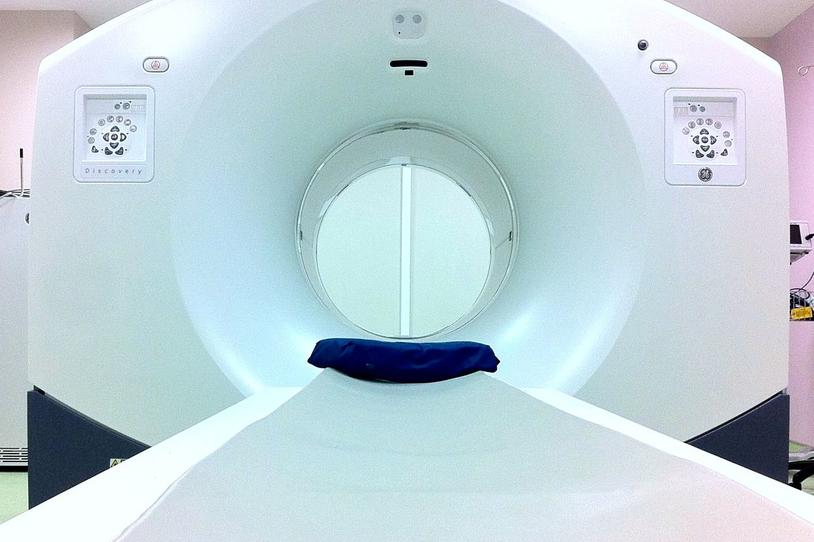
We know from Alzheimer’s disease the difference an imaging tracer can make. The U.S Food and Drug Administration’s 2012 approval of Amyvid (florbetapir F18 injection) — a beta-amyloid tracer used in positron emission tomography (PET) scans — was transformative.
Ten years ago, before the approval of Amyvid, therapies targeting beta-amyloid were already in clinical trials. But trial teams didn’t know if these therapies were lowering levels of beta-amyloid — they didn’t even know if the patients enrolled in the trials had beta-amyloid plaques in their brains.
Today, we are in a similar position in Parkinson’s research. There are 13 therapies specifically targeting alpha-synuclein in clinical trials and currently no way to measure if they actually lower alpha-synuclein.
The Goal
To understand how much (or if) these therapies lower the level of alpha-synuclein in the brain, we need a way to measure that. In Parkinson's disease, the protein alpha-synuclein accumulates into clumps and impairs the ability of brain cells to function. Our best option is to use a PET tracer that will bind selectively to alpha-synuclein so we can visualize these clumps. (Researchers are also pursuing other options, including measuring alpha-synuclein levels in cerebral spinal fluid. Much of this work is using biosamples and data collected through the MJFF-sponsored Parkinson’s Progression Markers Initiative study.)
Challenges
It's hard to find a tracer that binds to alpha-synuclein but doesn't also bind to other things. There may be other proteins accumulating in the brain, like the beta-amyloid plaques associated with Alzheimer’s or tau tangles involved in several diseases. You might find something that binds very well to alpha-synuclein, but it also binds to beta-amyloid and tau. And that lack of selectivity is a problem. But it’s not the only one.
A 2013 paper in the Journal of Parkinson’s Disease I co-authored with MJFF colleagues outlined others. Alpha-synuclein is not very abundant in the brain, and it accumulates intracellularly. An alpha-synuclein tracer needs to cross the blood-brain barrier and cellular membrane and not bind to anything else along the way. Earlier this year, Tauvid (flortaucipir F18) was approved as a PET tracer for imaging tau in Alzheimer’s. Tau is also an intracellular protein, so we know these challenges are not insurmountable.
Our Progress
When I started at The Michael J. Fox Foundation 10 years ago, very few researchers were working to develop an alpha-synuclein PET tracer. That was due to both a lack of funding and few research tools. Our initial funding focused on generating assays and other essential tools.
In 2011, we established the Consortium to Develop an Alpha-synuclein Imaging Agent with four partners to identify and test compounds that could be used as alpha-synuclein tracers. That group published findings in 2013 in PlosONE on the feasibility of a screening approach for identifying potential tracers.
With tools in place, the task became spurring more radiochemists, who don’t always focus on a single disease, to work on Parkinson's and alpha-synuclein. In 2016, MJFF launched the $2 million Alpha-synuclein Imaging Prize for the first team to develop a selective alpha-synuclein PET tracer and make it accessible to the field. A year later, we partnered with the Tau Consortium to support the development of tracers for tau and alpha-synuclein. And in 2019, we announced the $10 million Ken Griffin Alpha-synuclein Imaging Competition.
And these efforts have resulted in more teams working on alpha-synuclein imaging and more funders willing to support this work. Researchers at Perelman School of Medicine at the University of Pennsylvania are continuing an alpha-synuclein tracer development project (previously funded by MJFF) thanks to a $20 million grant from the National Institute of Neurological Disorders and Stroke.
We also announced three winners from the Ken Griffin Alpha-synuclein Imaging Competition this week AC Immune, a previous MJFF grantee, has conducted clinical trials of two selective alpha-synuclein tracers and plans to continue its clinical program with this new funding. We also saw proposals from groups we had never funded and some we didn’t yet know were working on this. Merck will use its competition award to develop and optimize lead candidates it already discovered. The third team, which includes researchers from Massachusetts General Hospital, Brigham and Women’s, and University College London, plans to screen billions of potential tracer compounds using a novel approach to tracer development: a high-throughput screen of a large DNA-encoded library.
The Future
In a sense, tracer development is racing the alpha-synuclein therapies in clinical trials. We want to make sure drug developers can understand if their therapies lower alpha-synuclein levels in the brain.
We’re getting closer to making that happen. Teams across the world — in academia, pharmaceutical companies, and biotechs — are working to develop alpha-synuclein imaging agents using approaches and tools established over the last decade.
The first alpha-synuclein PET tracer will be a game-changer. Like in Alzheimer’s, a PET scan will enable researchers to enroll the right patients in trials and understand if their therapy is having the intended effect. But we don’t intend to stop with the first tracer. Alpha-synuclein accumulates in the brain in multiple forms, and these different forms may have an impact on symptoms in Parkinson’s and other diseases that involve alpha-synuclein, such as dementia with Lewy bodies and multiple system atrophy (MSA). More tracers mean better diagnosis and therapies for people with Parkinson’s and related diseases.
I’m optimistic we will get there.